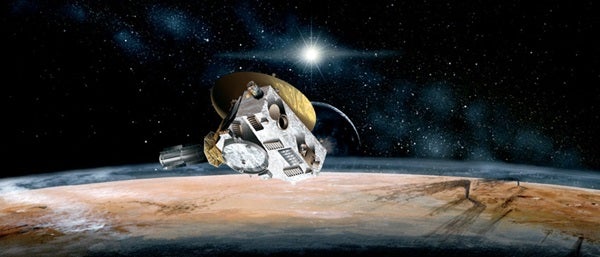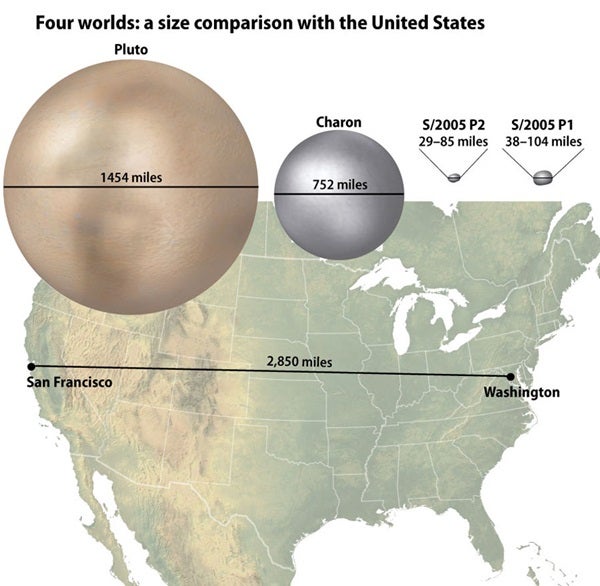The reason Pluto’s small moons might generate rings, but its large moon Charon would not, is that Charon’s gravity requires an escape speed of almost 1,100 mph (1,800 kilometers/hour). This means Charon is large enough to hold on to virtually all ejecta that would result from impacts on its surface. In contrast, P1 and P2 have escape speeds about 10 times smaller, allowing much of the ejecta produced in impact events on their surfaces to get into orbit around Pluto. We’ve also predicted that such rings might occur around large Kuiper Belt objects (KBOs) that have small — P1- and P2-size — satellites.
Hal Weaver, myself, and the rest of our research team wrote about this possibility in scientific papers published in the February 22, 2006, issue of the scientific journal Nature. Our calculations show that such rings would be tenuous, like Jupiter’s ring system. Also, both the occurrence frequency and how much material surrounds Pluto should vary in time — owing to the random nature of impacts on the small moons and the still-uncertain rate in which material from impacts would dissipate.
Any plutonian rings would be almost impossible to spot from Earth, even with the best equipment. However, future stellar occultation events — when Pluto obscures the light from a distant star, allowing astronomers to study the planet carefully — might present opportunities for such a discovery.
The New Horizons mission, which launched January 19, is on its way to Pluto. Once the spacecraft arrives in mid-2015, we plan to use it to look for dust rings or dust sheets in the Pluto system. With exquisitely sensitive cameras and a dust detector, New Horizons is probably the best way to determine if Pluto has rings.











